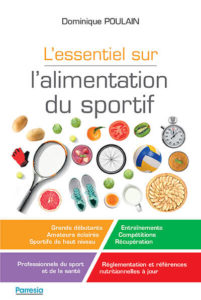Lien entre petit déjeuner et niveau de dépense physique
Breakfast consumption and physical activity in adolescents : daily associations and hourly patterns.
Author information
Corder K1, van Sluijs EM, Ridgway CL, Steele RM, Prynne CJ, Stephen AM, Bamber DJ, Dunn VJ, Goodyer IM, Ekelund U.
1UK Clinical Research Collaboration Centre for Diet and Activity Research (KC and EMFvS), Medical Research Council (MRC) Epidemiology Unit (KC, CLR, RMS, EMFvS, and UE), University of Cambridge School of Clinical Medicine, Institute of Metabolic Science, Cambridge Biomedical Campus, Cambridge, United Kingdom; the MRC Human Nutrition Research, Elsie Widdowson Laboratory, Cambridge, United Kingdom (CJP and AMS); the Developmental Psychiatry Section, Department of Psychiatry, University of Cambridge, Cambridge, United Kingdom (DJB, VJD, and IMG); and the Department of Sports Medicine, Norwegian School of Sports Sciences, Oslo, Norway (UE).
Abstract
BACKGROUND : The association between breakfast consumption and physical activity (PA) is inconclusive.
OBJECTIVE : We aimed to investigate daily associations and hourly patterns of PA and breakfast consumption in British adolescents.
DESIGN : Daily PA [accelerometry-derived moderate and vigorous physical activity (MVPA)] and breakfast consumption (diet diary) were measured simultaneously over 4 d in 860 adolescents (boys: 43.4%; mean ± SD age: 14.5 ± 0.5 y). Associations between MVPA and breakfast consumption were assessed by using a multilevel mixed-effects logistic regression separately by sex and for weekends and weekdays. Hourly patterns of MVPA by breakfast consumption status were displayed graphically, and differences were tested by using ANOVA. Multilevel linear regression was used to investigate differences in log MVPA on days when 570 inconsistent breakfast consumers ate or skipped breakfast.
RESULTS : On weekends, boys and girls with higher MVPA were more likely to eat breakfast [OR (95% CI): boys, 1.78 (1.30, 2.45) (P < 0.001); girls, 2.30 (1.66, 3.08) (P < 0.001)] when adjusted for socioeconomic status, percentage of body fat, and total energy intake. Peak hourly MVPA differed for breakfast consumers compared with nonconsumers on weekends (P < 0.001). Inconsistent breakfast consumers did more MVPA on days when they ate breakfast [exponentiated β coefficients (95% CIs): 1.2 (1.0, 1.5) on weekdays and 1.4 (1.1, 1.8) on weekends for boys and 1.6 (1.3, 2.1) on weekends for girls; all P < 0.03].
CONCLUSIONS : Eating breakfast was associated with higher MVPA on weekends. The time of peak MVPA differed between breakfast consumers and nonconsumers on weekends. Breakfast consumption at weekends is worth additional investigation to potentially inform PA promotion in adolescents.
Source : Am J Clin Nutr. 2014 Feb;99(2):361-8. doi: 10.3945/ajcn.111.027607.
Santé et Performance

Notre Société savante a pour mission de promouvoir la Nutrition du sport, dans un objectif de protection de la santé, de recherche de performance, et de prévention des conduites addictives.
Nous proposons des colloques et des journées de formation, fondés sur une actualisation des connaissances scientifiques...
> Santé et Performance

